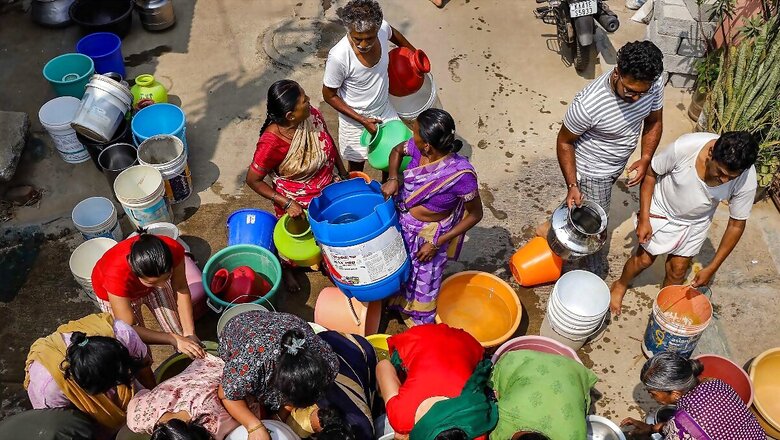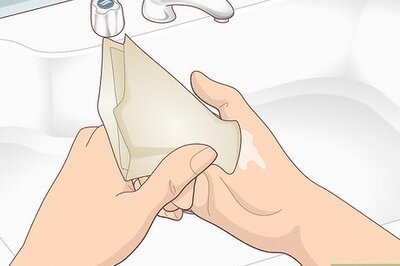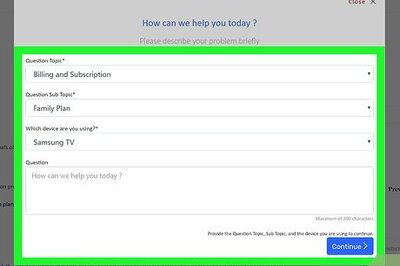
views
Back in 2016, Centre for Ecological Sciences (CES) of Indian Institute of Science, Bengaluru, figured a way for the IT hub to stay water surplus. On an average, 20.05 TMC (thousand million cubic feet) of water is required every year for domestic purposes, CES’s technical report established. Of which about 16.04 TMC, about 80 percent, could be met just by treating sewage water, suggested the report. Add to this, the rain yield, which is about 14.80TMC a year and Bengaluru could easily meet its water needs, the report stated. Cut to 2023. Some apartment owners of Emmanuel Heights in Hosa Road, Sarjapur, proposed setting up a sewage treatment plant in October. Little did they know that it would take them almost six months to convince the others.
They all agreed only after the firm setting up the sewage treatment equipment put it in the agreement that they will buy all the treated water. Many people were adamant that not a drop of the treated water should be used inside the complex. Forget drinking, they did not even want the treated water for watering the plants, because they have the tulsi plant, said Gopidas, a software engineer at Amazon who resides at Immanuel Heights. S Vishwanath, Bengaluru’s go-to man for water conservancy and director of Biome Environmental Solutions is a long-time advocate of treated wastewater for drinking. According to him, it is now all in the mind, as science has already shown that it is perfectly fine to drink treated wastewater.
People are finding it difficult to wrap their head around drinking what they consider sewage. All things said against it are mostly stemming out of ignorance. Science has already advanced far enough for us to drink treated wastewater without causing any health problems, Vishwanath told PTI. Little over 10 days ago, investment whiz Nithin Kamath, founder and CEO of Zerodha and Rainmatter Foundation, propped up Boson White Water, a Bengaluru-based firm that converts wastewater into potable water, stating that wastewater could be the part of the solution for Bengaluru’s water shortage crisis, on X. Although some agreed with him, most were revulsed by the idea of drinking water that was once sewage. Replying to Kamath, people started saying, without any scientific backing, that treated water will have heavy metals or hormones and therefore is unfit for consumption. The concern also stemmed from the perception that sewage treatment plants are run in a very bad way.
Vikas Brahmavar, one of the founders of the start-up Boson White Water, said they were deluged with calls after their promotional video forwarded by Kamath went viral. In a day, we got more than 300 calls. We have been doing this for two years now, and at most we get a dozen calls every day, said Brahmavar to PTI.
But Brahmavar said most of it again were attempts to reiterate that wastewater, treated or not, is smelly and dirty. In these two years, we have come a long way. But we are yet to convince people to drink wastewater. It will take some more time to break through that psychological barrier. What people are failing to understand is that the moment we started depending on tankers for water supply, we are past the water is dirty’ curve. Who knows where they get that water from, said Brahmavar. Vishwanath said people are also not realising that treated wastewater is already being consumed indirectly.
He pointed out to the Lakshmi Sagara lake in Kolar, which is the first of 82 lakes in Kolar and Chikkaballapur districts to be filled with treated wastewater from an STP, as part of Koramangala-Challaghatta (KC) Valley project, in which the government plans to fill 134 lakes at the cost of Rs 1,342 crore. The project is one of the first in India to formally use secondary treated wastewater at such large volumes to fill the tanks and river ecosystem and provide water for agricultural use, said Viswanath. He said his organisation, Biome Environmental Trust, did a study in June 2021 among the locals, mostly farmers, about the impact of the project, and found out that treated water-filled lakes and tanks increased the yields of borewells.
In Lakshmi Sagara, for instance, in three months of the lake being filled with treated wastewater, water level in open wells increased and in six months water level in borewells increased. Now, farmers here are cultivating throughout the year, he said. In the Biome report, the farmers that the researchers spoke to had confirmed that contrary to the negative assumptions earlier, which had delayed the project, they found that the effort had rejuvenated the depleted groundwater and that most are finding groundwater at 300 to 400 feet. Earlier it was difficult to find water even at 1,200 feet, they said, adding that they often dug between two to four borewells, due to previous ones failing to yield water. In India, one estimate suggests that treated wastewater can annually irrigate about 1 to 1.5million hectares of land. I think proper hydrogeology and aquifer mapping studies need to be done to establish the impact on recharge better.
”But, this is the only way forward for us to cut down our dependence on rain. I also think if people start getting comfortable with non-potable uses, potable will follow. It’s only a matter of time, said Viswanath.
Stay Ahead With all the Lok Sabha Election 2024 Related Real-Time Updates At News18 Website.


















Comments
0 comment